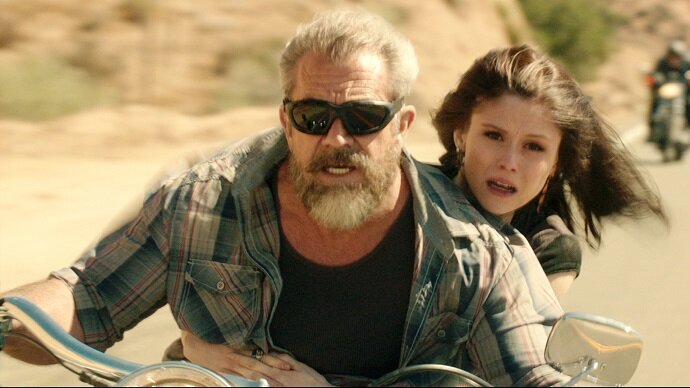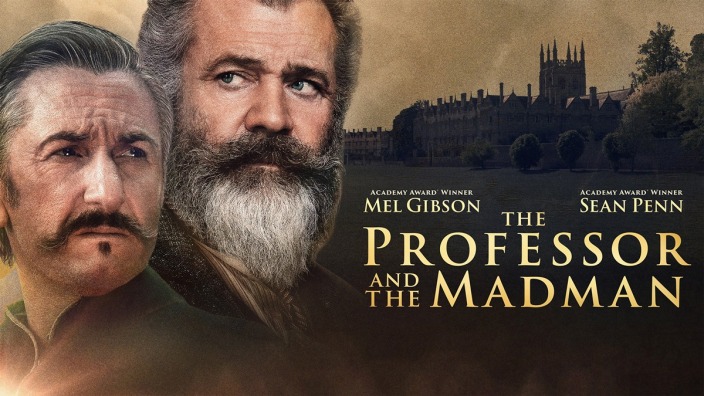Australian actors have often made a significant contribution in Hollywood with their versatility and magnetic presence. Think stylish luminaries like Cate Blanchett and Nicole Kidman, action superstars like Hugh Jackman and Chris Hemsworth, or charismatic thespians Toni Collette and Naomi Watts. And then there’s Mel Gibson.
Like many of his peers, the multi-hyphenated celebrity worked for many years as a relative unknown, before being catapulted to fame in the dieselpunk extravaganza Mad Max. Then from desert warrior to cheeky cop, he gained new cred as a bonafide star with Lethal Weapon. With two highly successful franchises under his belt, he sought critical acclaim through turns with more experimental genres, like Hamlet and The Man Without a Face, but struck gold with Braveheart, to which he was also the director, winning him Academy nods for Best Picture and Best Director in 1995.
And while he continued to act, it was almost a decade later before he helmed a film again - this time for the controversial The Passion of the Christ. The film gained so much attention from the community (both good and bad) that one might say his following works were burdened with that notoriety and had lukewarm reception.
After Apocalypto in 2006, he took a break after personal scandals dogged him, of which he later clarified and was cleared off. But it prompted the actor to reassess his priorities, and he emerged with projects in 2010.
Gibson’s work has since picked up speed, with yearly releases sometimes becoming twice a year. His success with some of these also proved to pundits that the veteran still had plenty to give. With news of his upcoming directorial effort for The Wild Bunch targeted for 2022, it’ll be the litmus test everyone is waiting for to see if this thespian mogul still has the touch.
Given his features in the past few years, we’re thinking it’s highly likely.
Dragged Across Concrete (2018)
Desperate times call for desperate measures. When officers Ridgeman (Gibson) and Lurasetti (Vince Vaughn) busted drug lord Vasquez, it should have been a victory. Instead, a leaked video of Ridgeman’s rough manhandling to subdue Vasquez has the public outraged, and the two officers are placed on no-pay leave for six weeks. Talk about anticlimactic!
With their own financial situations hanging by a thread, they find an unexpected lead - to commit a crime themselves for some bonafide loot. Disappointed with the justice system, they take it upon themselves to do what’s necessary, and it leads them down a complicated web.
Maybe Hacksaw Ridge in 2017 sparked some conversations between the two so Gibson and Vince Vaugh returned to work together, but this time as acting partners in this wry and grisly 2018 film by S. Craig Zahler.
Dragged Across Cement is as gritty and unchecked as the title sounds. For fans of cop and street dramas, the tone here is less about thrill-seeking chases than it is about an almost pessimistic look at the system. It’s a black hole of characters corralled into sacrificing for their loved ones, and yet a dark cloud of humour floats above the events. It’s abrasive yes, and yet there’s a light-at-the-end-of-the-tunnel quality here that pulls you all the way through.
The Professor & The Madman (2019)
The Oxford English Dictionary is well-regarded as the pinnacle guide to the English language, but would you have expected significant contributions to have come from a committed lunatic?
When the brilliant autodidact professor James Murray (Gibson) is tasked to compile the volume, he designs a plan to receive submissions from users of the English language all around the world to guarantee a comprehensive tome. He finds himself establishing a relationship with a frequent contributor from Crowthorne, and traces it back to William Chester minor (Sean Penn), who’s committed for a murder.
The story here remains riveting for its theme of finding brilliance in unexpected places, and shines past the spate of setbacks on its release. The period drama benefits from vivid performances from the two leads, and spins also a tale of friendship and forgiveness. Because this is based on actual figures, it lets us better appreciate the efforts of those that came before us. For details and comparisons, head over to the true references from this film in this article.
How I Spent My Summer Vacation (2012)
Also known as Get The Gringo, it would seem Gibson decided to go full-hilt rakish with this film, almost as if he got tired of seeking vindication from the public for his scandal. With snappy cuts and an energetic script, How I Spent My Summer Vacation goes down easily like a luxurious shot of tequila.
When Gibson as the getaway driver gets caught and sent to the infamous "El Pueblito" prison, he must quickly figure out the system as the only American in a compound of hardened Mexican criminals. He finds this in a 10-year-old urchin who was born inside the prison, and the two form an unlikely bond. When more secrets are revealed, Gibson finds he has to fight his way out - not an easy feat when you stick out like a sore thumb.
The film is fun to watch through and through. Kevin Hernandez is the dynamic counter to Gibson’s otherwise bitter “gringo”, and the scenes of the two are always a riot. This film shuttles fast, and is chock full of cheek and witty banter. And with the rich setting and easy-to-follow plot, it is one of Gibson’s most underappreciated revival films to watch.
The Beaver (2011)

As one of the first films after his break, Gibson needed a real reason to do a worthy project. That came in the form of Jodie Foster.
The Beaver is a ride of a tale - oddly heartwarming even though the story comes across very much depressing. Playing a depressed head of a failing toy company, Gibson paints a poignant picture of a father and husband struggling to come to terms with his ineptitude. After a few suicide attempts, the man spots a discarded beaver puppet and channels his communications openly through the toy. It brings him some redemption, and his company resurrects with themes of the animal, but the persona becomes so ingrained that it creates a new level of concern for the family, most of all his belligerent son.
There’s plenty of charm and humour in this 2011 project, and it never veers into wacky or rude with the puppet, giving the title some differentiation from other talking sidekick tropes, but The Beaver’s most compelling sell is the underlying message of how we heal from ourselves and the deep mistakes that trigger bigger issues.
It’s moving and funny - a wonderful formula to enjoy with just about everyone, but most of all, your loved ones.
Blood Father (2016)

The 2016 Blood Father is similar to hostage classic Taken but in another form. Gibson is John Link, a recovering alcoholic and ex-con that receives a call from his estranged daughter asking for refuge. Lydia (Erin Moriarty) is apparently wanted by a gang for the accidental murder of their leader - her ex-boyfriend, and John must draw upon all his resources to protect the one thing he can still save.
The plot here doesn’t surprise and we’re treated to a formula we’ve seen before. But because the chemistry between Gibson and Moriarty is so palpable, the tension that comes from their resistance is exciting to watch. Apart from the supporting cast that adds dimension to the story, there are sequences here that puts the foot to the pedal, giving the audience a rush of adrenaline fueled by the fire of a father’s love.








